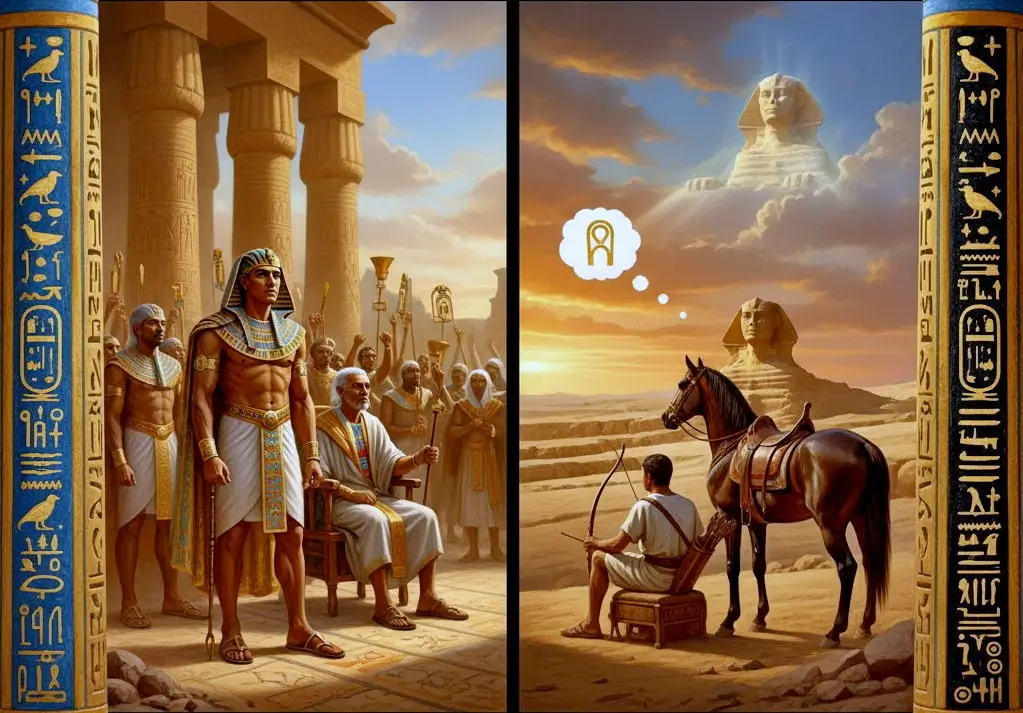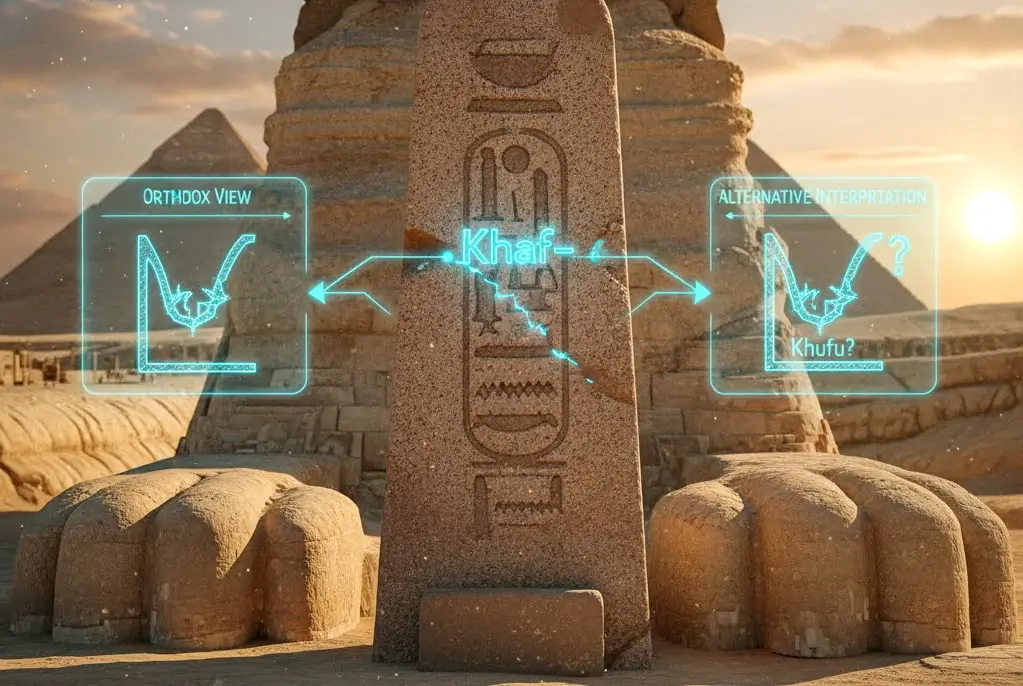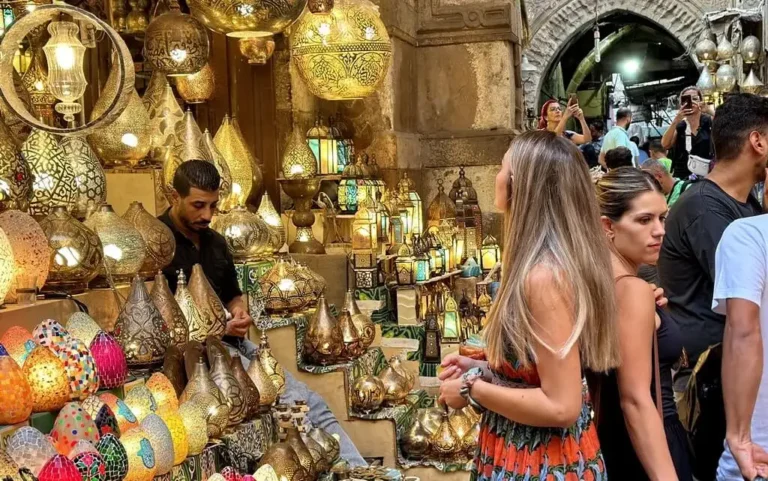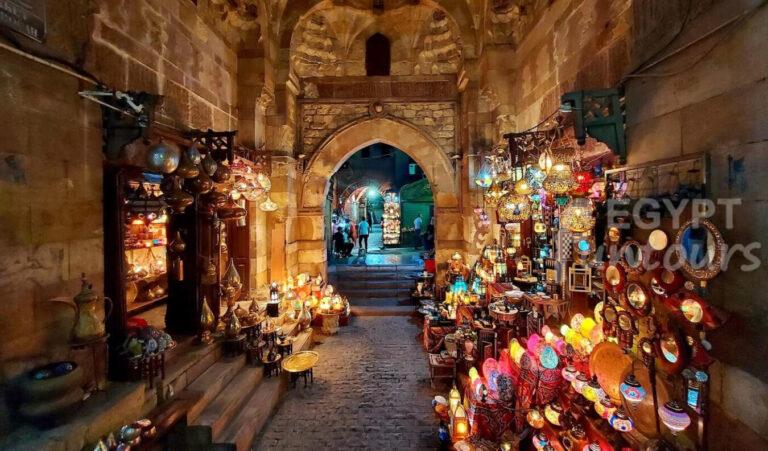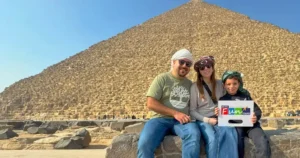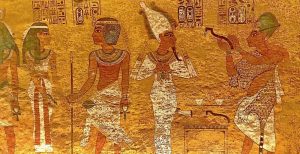The Prophecy: What the Dream Stele Actually Says
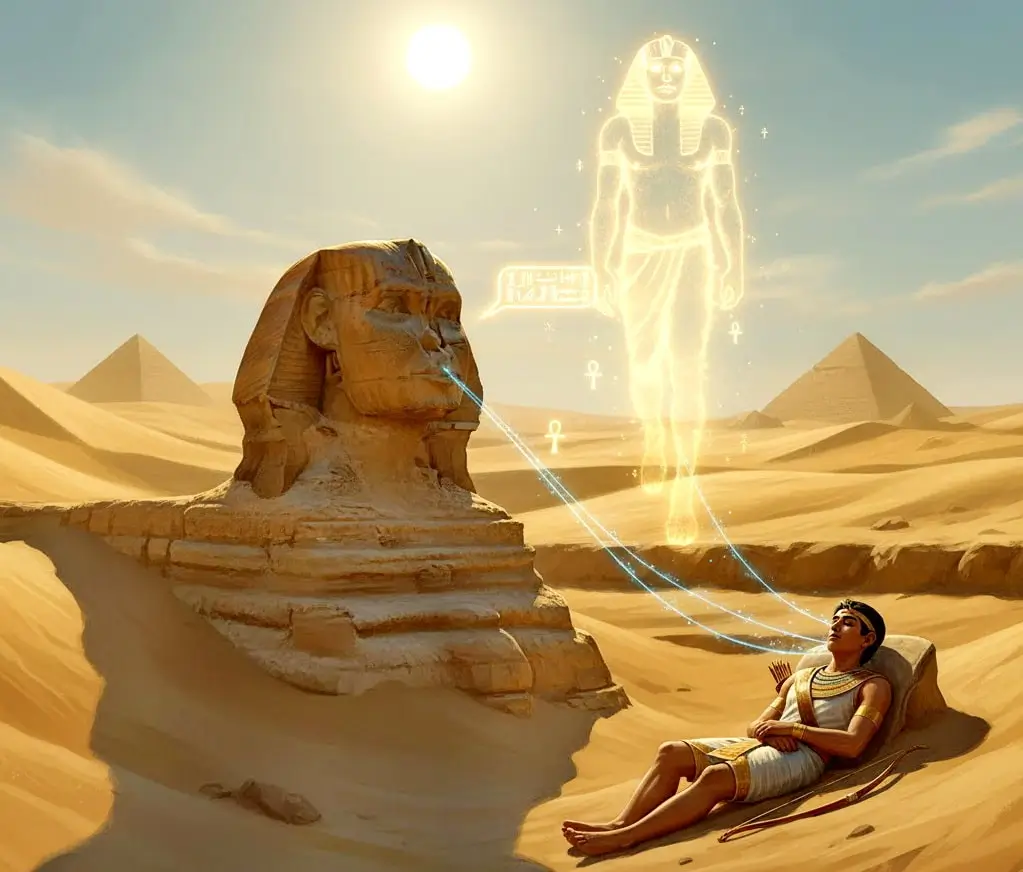
With Thutmose needing a divine sign, the story he carved onto the Dream Stele provided the perfect solution. It’s a masterful narrative that unfolds in several clear acts.
The Hunting Trip
First, the Dream Stele sets the scene. It describes Thutmose as a dynamic, athletic prince (“a stripling like Horus“), full of life. He hunts in the Giza desert near Memphis, shooting at copper targets from his chariot and racing with his followers—a typical display of royal prowess.
The Midday Nap
At the hottest part of the day, “when the sun was at its zenith,” he decides to rest. Significantly, he lies down in the shadow of the Great Sphinx’s head. At this time, the desert sand had buried the monument completely, leaving only its head and neck visible.
The Dream
As he sleeps, the Sphinx appears to him in a dream. The text identifies the Sphinx as the “very great and mighty” god Horemakhet-Khepri-Ra-Atum. Then, the god speaks directly to Thutmose “from his own mouth, as a father speaks to his son.”
The Sphinx’s Complaint
This is the core of the bargain. The Sphinx complains bitterly about his condition. He says, “My body is in ruins, the sand of the desert upon which I rest is choking me.” He laments that his “son” (Thutmose) has seen his wretched state but has not yet acted to help.
The Divine Promise
In exchange for help, the Sphinx makes a direct and powerful offer. He promises, “If you will do what my heart desires, I will give to you my kingship upon the earth…” Essentially, the god tells Thutmose: “Clear the sand from my body, and I will make you pharaoh.”
The Fulfillment
Immediately, Thutmose awakens, understanding the divine message. He orders the sand cleared away and begins a massive restoration of the ancient monument. Just as the god promised, Thutmose becomes pharaoh of Egypt. Later in his reign, he erects the Dream Stele to commemorate this divine event, locking his claim to the throne in stone for all time.
More Than a Dream: The Stele as Political Propaganda

Now we connect the story in the Dream Stele back to Thutmose’s “succession problem.” That dream was not just a charming anecdote; it was a political masterstroke.
Justifying the “Usurper”
As we established, Thutmose IV was not the rightful heir. He needed a divine endorsement to justify his rule, especially over any supporters of his deceased older brother.
This stele provided his permanent, public proof. It is, in effect, a stone “press release” that declares: “My father may not have chosen me, but the most powerful, ancient god in the land personally intervened. Horemakhet spoke to me, called me his son, and gave me the throne.”
This brilliant move silenced any questions about his right to rule. How could anyone argue against the direct, spoken word of a god?
Cementing a Religious Alliance
Furthermore, the story was also a savvy religious move. By publicly honoring the Sphinx and “rescuing” him from the sand, Thutmose IV allied himself with the powerful and extremely popular priesthood of Horemakhet.
He presented himself not just as a king, but as a pious restorer of ancient, sacred traditions. This act made him look both devout and powerful, which helped him solidify his control over Egypt’s complex religious and political landscape. In short, the Dream Stele was the ultimate win-win, securing his crown both politically and religiously.


